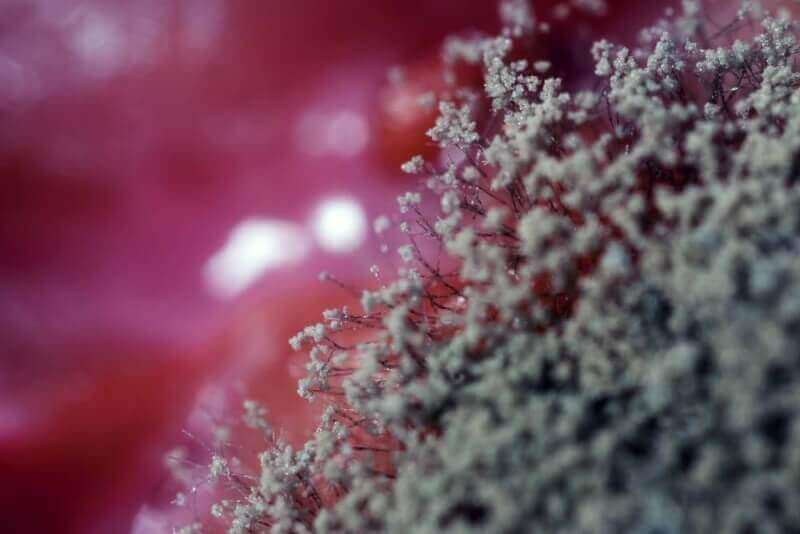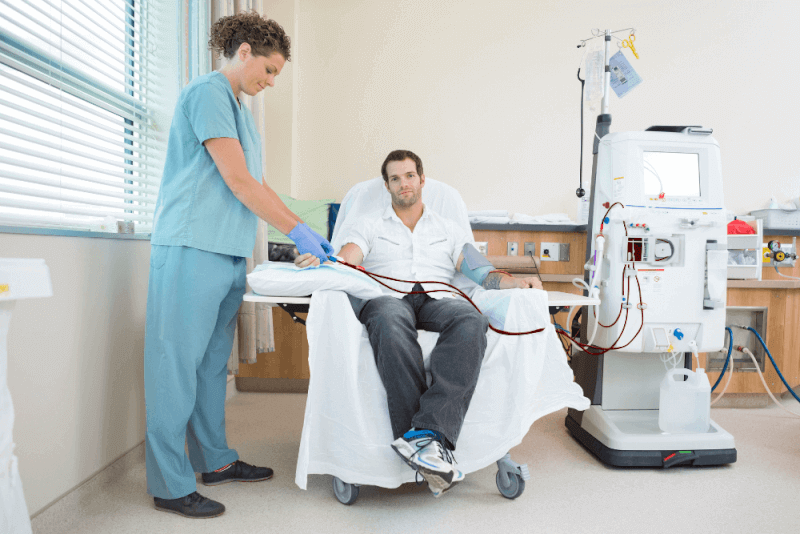30 Second Summary
- Black fungus disease is a fatal disease caused by a mold called mucormycetes, which is found in soil and compost areas, entering the body through inhalation or open wounds.
- Symptoms include shortness of breath, rapidly spreading black lesions on the nose and roof of the mouth, fever, headache, vomiting and abdominal pain.
- When diagnosed and treated early, it can be completely cured, but left untreated it can be fatal.
- Antifungal drugs and surgical methods are used in its treatment.
What is Black Fungal Disease (Mucormycosis)?
Mucormycosis, one of the extremely rare diseases, is also known as black fungal disease. After the Coronavirus outbreak, cases of Black fungus disease in India increased significantly, suggesting an association between the two diseases. Studies have shown that Covid 19 patients are more susceptible to black fungal disease due to their weakened immune system. It has been proven that Black fungal disease is more common not only in covid-19 patients, but also in patients with cancer treatment, people diagnosed with HIV and individuals with chronic immune system diseases.
Black fungus disease, an extremely rare disease, is caused by a type of mold called mucormycetes, which occurs in soil or compost areas, entering the body through open wounds or by inhalation of its spores .
If treated at an early stage, patients can recover completely, but if left untreated, the disease can be fatal.
Types of black fungal disease (mucormycosis)
Black fungus varies according to the area it affects. Black fungal disease mainly affects 5 different areas.
Sinus and brain mucormycosis
Black fungus of the sinuses and brain, also called zygomycosis and rhinoserebral mucormycosis, is caused by fungal infections of the brain, nose, sinuses and paranasal areas. In addition to being rare, it is especially common in people with a low immune system. Because the fungus that causes this disease is an opportunistic pathogen.
Among the characteristics of people who usually have sinus and brain black fungus disease are the following.
- Diabetic ketoacidosis
- Serious burns
- Steroid treatment
- Solid organ transplantation
- Long-term corticosteroid therapy
- Hemochromatosis
- HIV patients
- Neutropenia
- Malnutrition
- Hematologic malignancies
Lung mucormycosis
Lung mucormycosis is a type with high mortality rates. It can be extremely fatal, especially in patients with poorly controlled diabetes. To increase the chances of survival, the disease should be diagnosed at an early stage and treated with the necessary antifungal drugs. Standard treatments for pulmonary mucormycosis include surgical resection.
Gastrointestinal mucormycosis
Until two decades ago, black fungus in the digestive tract was a rare disease in industrialized societies. However, in the last 20 years, the prevalence has increased significantly in these populations.
The most common digestive organ in which gastrointestinal mucormycosis occurs is the stomach. After that it is the colon and ileum. It is particularly common in newborns and premature infants, but has recently been seen in people with risk factors such as diabetes, defects in host phagocytes, organ or stem cell transplantation and corticosteroid use.
The symptoms of gastrointestinal mucormycosis vary depending on the affected area. These symptoms include the following.
- Non-specific abdominal pain due to nausea and vomiting
- Bloating
These symptoms lead one to think of an intra-abdominal abscess. For diagnosis, a biopsy sample should be taken during surgery or endoscopy should be performed.
Skin mucormycosis
Black fungal skin disease, especially in immunocompromised individuals with uncontrolled diabetes, is caused by trauma and direct inoculation. Although the clinical picture of skin mucormycosis is not distinct, the most common symptom is hardened plaque formation. Therefore, confirmation of the etiologic agent is necessary for patients to be diagnosed.
Skin mucormycosis is caused not only by trauma but also by the spread of rhinoserebral mucormycosis to the skin. In addition to having both localized and disseminated species, the most common sites include the arms and legs. These are followed by the scalp, face, thorax, abdomen, back, neck and gluteal region.
Disseminated mucormycosis
It is a type of black fungal disease that affects different parts of the body by entering the bloodstream. Disseminated mucormycosis usually affects the brain but can also affect organs such as the spleen, lungs and heart.
Symptoms of Black Fungus Disease
The symptoms of black fungus disease vary depending on the area of the body where the mucormycetes are located. Among the symptoms of black fungal disease, the most common symptoms are the following:
- Sleepiness
- Dizziness,
- Blurred consciousness,
- Abdominal pain
- Blood in the stool,
- Diarrhea
- Vomiting
- Shortness of breath
- Rapidly spreading black lesions on the nose and upper mouth,
- Runny nose
- Headache
- One-sided swelling of the face,
- Cough
- Fire,
If the Black fungal disease is localized on the skin, then the symptoms of the disease may include swelling, blistering or redness in the areas affected by the fungus. Symptoms include black discoloration of the skin in the area affected by the fungus and feeling hot in the area.
Since black fungus is a disease that can penetrate the vascular pathways, it is a type of fungus that can reach and damage vital organs of the body through the blood. Black fungus disease, which progresses to vital organs such as the heart and brain, is 54% fatal if left untreated.
Black Fungus Disease Diagnosis
Diagnosis of black fungal disease is often not possible with standard blood tests and physical examination. Therefore, additional diagnostic methods are needed.
Blood Tests
Blood tests alone cannot help diagnose black fungal disease. However, a deficiency in white blood cells is considered a risk factor for black fungal disease.
Radiological Imaging
With the use of radiological imaging methods, it is possible to identify the areas where the disease has spread. It gives a clear idea of the presence of the disease in the brain, sinuses, abdomen, lungs or other body parts where it often spreads.
Endoscopic Examinations
If the black fungal disease is thought to be located in the sinus and nasal structures, then it is extremely important to visualize the area with endoscopic examinations and take tissue samples.
Computerized Tomography
Computed tomography can show tissue edema or thickening in systems such as the brain, eyes and chest. However, computed tomography alone is not sufficient as the images in the chest are similar to those of pneumonia. In order for these images to be meaningful, it is necessary to wait for the results of microscopic examination of the samples obtained by bronchoalveolar or sputum lavage.
Black Fungus Disease Treatment Methods
It is important that patients diagnosed with black fungal disease start treatment as soon as possible. Because Black fungal disease is one of the diseases that progresses rapidly and damages tissues rapidly.
Use of Antifungal Medicines
The first choice of treatment for black fungal disease is the use of antifungal medicines. Long-term use of antifungal drugs, given to patients both intravenously and orally, is important in the treatment of the disease. Generally, medications given intravenously in the first phase of treatment are switched to oral medications in the later stages of treatment.
Since the doses of antifungal drugs used in Black Fungus are very high, many side effects such as heartburn, abdominal pain and shortness of breath are expected to occur in patients. As these side effects occur, physicians should be informed about them.
Surgical methods
Another method used in the treatment of black fungus disease is surgical interventions. This is done by surgically removing the damaged tissues, especially in advanced Black Fungus disease, to prevent the spread of infection to other tissues.
Summary of Surgery
Duration of Surgery 1-5 hours
Anesthesia Method: General
Duration of Hospitalization: 5-14 days
Return to Work Period: 2-8 Weeks
As a result of these operations used in the treatment of black fungus disease, some of the organs may also be removed. However, surgical interventions are the most effective method to prevent the spread of infection.
Causes of black fungal disease (mucormycosis)
Black fungus is caused by a type of fungus called mucormycetes. This fungus lives in soil and compost areas and can affect people of all ages and genders. Although black fungus is a rare disease, it can be fatal. Other pathogens causing black fungal disease include Rhizopus species, Mucor species, Rhizomucor species, Syncephalastrum species, Cunninghamella bertholletiae, Apophysomyces species and Lichtheimia.
Although it is a type of fungus that people constantly encounter under normal conditions, the reason why it causes disease in some people is that some people carry some risks in terms of black fungus disease. These risks include the following:
- Weakened immunity due to a medication used
- Especially uncontrolled diabetes
- HIV or AIDS
- Cancer
- Being an organ transplant
- Having a stem cell transplant
- Low white blood cell count
- Long-term steroid use
- Drug use by injection
- High levels of iron in the body
- Malnutrition
- Metabolic acidosis
- Premature birth
- Low birth weight
- Skin injuries such as burns or cuts
Ways to prevent black fungus disease
Black fungus is not a disease that is transmitted from person to person. Since the disease is usually transmitted through soil, leaf and compost environments, personal protective measures should be taken during visits to risk areas. It is important to wear a mask when working in environments such as gardens and forests, especially on hot days such as spring and summer months, and to clean and close the wound as soon as possible in case of possible injuries.









